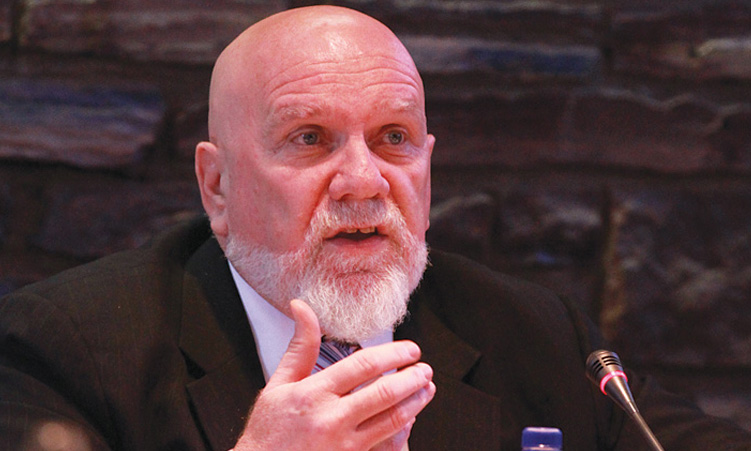Namibia has been engrossed in the European green hydrogen initiative since former president Hage Geingob announced the decision to award the green hydrogen project to Hyphen in 2021.
Currently, most hydrogen is not green and is produced from fossil fuels like grey hydrogen (such as gas, which costs around US$0,95 to US$2,70 per kg to produce).
Since the recent commitments in 2021 to decarbonise the European Union (EU) economy by 2050, hydrogen has become the preferred alternative fuel source of the EU, as well as other developed countries like the United States (US) and Japan.
What is unclear is whether the EU will use the 10 million tonnes of green hydrogen that it has said it will import annually by 2030.
Green hydrogen produced from renewable sources such as solar and wind power currently costs US$5-6 per kg or up to five times the market price of gas powered ‘grey’ (fossil fuels such as gas) or ‘black’ hydrogen. Black hydrogen made from bituminous coal is the cheapest but the most polluting of the means of manufacture.
The proponents of green hydrogen in Namibia believe that the cost of green hydrogen will decrease to US$1 per kg by 2030.
There are several commercial reasons why at its current prices, green hydrogen is even being considered by the developed countries as an alternative energy source.
The first and probably the most important is the existence of border taxes in the EU and other jurisdictions on carbon intensive products, like steel and cars etc., that do not use green production methods.
The second is that hydrogen is usable in large vehicles, such as ships and possibly large aeroplanes, which are less likely to be driven by direct electric engines given the state of the current technology.
The third reason is that there will be a premium paid for green energy sources and state subsidies offered by developed countries to reach the target of decarbonisation of the global economy by 2050.
The fourth reason is political, many of the governments in the EU are in political partnership with green parties or are trying to demonstrate their green credentials. The last reason is geo-political, hydrogen is not Russian oil or Chinese solar panels, which have become vital considerations for Europe.
Green hydrogen in Namibia is not the same as the Hyphen project. Hydrogen, despite its many drawbacks as an energy source, will be needed in sectors such as shipping, ‘green’ iron and steel, fertiliser, etc.
These are sectors where, for the moment, electric motors using solar or wind power are unlikely to be able to produce the energy required.
And so, the CMB project at Arandis, despite the recent hilarious ‘Potemkin-like’ photographs of the Belgian King pumping imported Belgian hydrogen into a truck at Walvis Bay, undermines the seriousness of the CMB project – a privately funded project that will provide green hydrogen for Belgian vessels to refuel at Walvis Bay, enroute to and from Asia.
There may well be other firms and sectors that are willing to pay the cost of green hydrogen, at least temporarily.
NAMIBIA’S WHITE HYDROGEN FUTURE
The most significant commercial risk to Namibia’s green hydrogen ambitions is whether what is called ‘white’ or geological hydrogen will prove to be commercially extractable and of sufficient importance to undermine the cost efficiency of manufactured hydrogen, irrespective of whether it is black, brown, grey, blue or green.
White hydrogen has been found in numerous locations, including Mali, Australia, Brazil, France, and the US. In Mali, the discovery of hydrogen occurred in 1987 and is estimated to hold between 46 and 250 million tonnes of natural hydrogen or several years of global supply at current demand.
While the Malian deposit has not been commercialised, it is producing electricity for the local village, Bourakébougou.
The US Geological Survey, a US government agency, recently announced that there is an estimated five trillion tonnes of hydrogen in the earth, and while only a small proportion of that will be commercially viable, it is estimated to be enough to last for hundreds of years of human demand.
The Australian company, Gold Hydrogen, has found hydrogen in South Australia and has an estimated volume of 1,3 million tonnes. It is widely expected that a global gold rush will now begin for white hydrogen, which may well undercut green hydrogen.
Australian firms are expecting to sell white hydrogen for US$1/kg, which would undermine the commercial position of green hydrogen producers. Other estimates suggest that the prices of white hydrogen may be even lower, at US$0,50 per kg.
There is much geological, technical and economic work to be done to make white hydrogen a commercial reality. There are major discoveries occurring everywhere on the planet and the major oil firms are now looking at white hydrogen closely and examining its commercial potential. White hydrogen, unlike oil is a renewable resource as the earth continues to produce it by interaction of water and iron in the earth’s mantle.
The most recent positive development in Namibia has been the series of geological studies on the occurrence of white hydrogen in what is called the Damara Belt in the Grootfontein region.
In the most recent scientific report published just one month ago, the French authors who are affiliated with TotalEnergy, concluded that the Damara Belt “… exhibits the major geological criteria, the most important of which are active hydrogen-rich gas seeps, that, using the analogy of petroleum systems, suggests Waterberg Basin is a prospective site for the accumulation of natural hydrogen gas that potentially could be produced in the future if further exploration efforts are successful”. Read ‘A new continental hydrogen play in Damara Belt (Namibia)’ by V Roche et al. Scientific Reports published on 22 May 2024.
TotalEnergy was contacted in Namibia as to whether they are preparing to undertake drilling for hydrogen in the region but they did not wish to reply, despite repeated attempts.
If hydrogen has a long-term future as an important energy source post decarbonisation, then it is more likely to be white rather than green because it will be far cheaper, sustainable and in its purest form, will have zero carbon emissions. Perhaps most importantly white hydrogen, because it will be drilled and will allow the world’s oil transnational companies to more seamlessly transform to a carbon free business model.
- • Roman Grynberg is a Polish-born professor of economics, author and academic. He is specialised in international trade and commodities and has written several research papers in the disciplines.
Stay informed with The Namibian – your source for credible journalism. Get in-depth reporting and opinions for
only N$85 a month. Invest in journalism, invest in democracy –
Subscribe Now!






